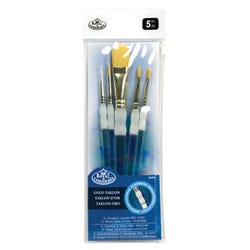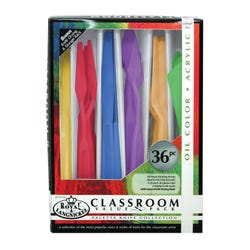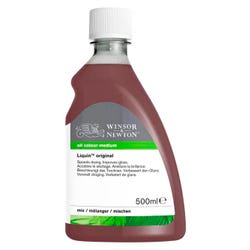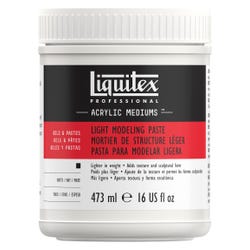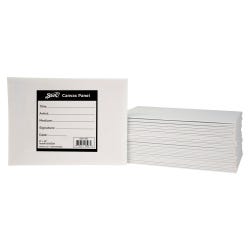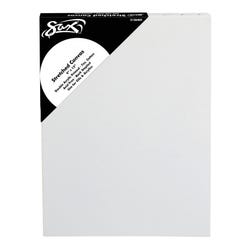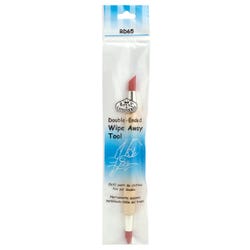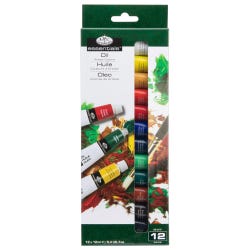Thiebaud’s Tasty Textures

Description
Lesson Plan and Artwork by Heather Gregory
Texture, a key but often overlooked element of art, helps create a sense of tactility that may be actual or implied. There are many ways to add texture to 2D artwork, and learning to utilize different mediums can bring your paintings to a literal new level. Wayne Thiebaud’s iconic themes and masterful use of impasto techniques are great inspiration for designing a sweet textured treat that is too good to eat!
Objectives
- Investigate the art of Wayne Thiebaud and analyze his use of impasto techniques to mimic the actual texture of a cupcake’s frosting and wrapper.
- Experiment with the use of modeling compounds to build texture into the foundation of a painting.
- Create a colorful confection painting by exploring the unique qualities of Royal & Langnickel® Essential Oil Paint to produce shadow and highlight.
Supplies Needed
Royal & Langnickel® Essential Oil Artist Paint, Set of 12
Royal & Langnickel® Soft Grip Golden Taklon Fiber Paint Brush, Set of 5
Royal & Langnickel® Plastic Painting Knives Classroom Pack, Pack of 36
Royal & Langnickel® Wipe Out Tool, Dual Ended, Set 2
Sax® True Flow Low VOC Odorless Solvent, qt
Sax® Genuine Canvas Panels, White, 9" x 12", Pack of 36
Sax® Quality Stretched Canvas, White, Double Acrylic Primed, 9" x 12"
Liquin™, 16.9 oz
Light Modeling Paste, 16 oz
*Here are the supplies needed for this lesson plan for reference. Find a convenient carousel of shoppable products for this lesson below.
Standards
Standard #1: Generate and conceptualize artistic ideas and work.
Standard #2: Organize and develop artistic ideas and work.
Standard #3: Refine and complete artistic work.
Instructions
1
Analyze and discuss works by artist Wayne Thiebaud, paying special attention to his cupcake oil paintings. His Neapolitan Cupcakes, c.2008, Nine Cupcakes, c. 2009, and Untitled (cupcake), c. 2001, are excellent examples.
2
Discuss how Thiebaud used the texture of oil paint to mimic the actual texture of frosting, and brainstorm tools he might have used to achieve these textures. Show students a variety of artistic and experimental tools that could be used for applying texture. Brushes in a variety of sizes, palette knives, wipe tools, cardboard scraps, and even actual cake decorating tools are all options.
3
Give students time to sketch a plan for their own cupcake-inspired oil paintings. This can be done with oil pastels on paper to mimic the look of oil paint on canvas. Playing with color combinations and blends to create highlights and shadows in oil pastel will allow students the opportunity to organize and develop ideas before facing the unique challenges of oil paint. A guided drawing lesson may also help reluctant or struggling students.
4
Direct students to lightly sketch their chosen simplified cupcake composition onto canvas using pencil. The cupcake should be large to allow for easier texture application. Small details are not necessary at this stage and will be added in the final paint layers.
5
Guide students in the application of modeling paste to the top portion (frosting) of the cupcake first. Demonstrate a variety of tools. Due to the drying time of the paste, the area may be reworked repeatedly until the desired frosting effect is achieved.
6
Direct students to apply the modeling paste and build the base of the cupcake. Point out the difference in texture with the wrapper’s vertical creases. Change application tools as needed. NOTE: Working from top to bottom of the composition helps preserve previously applied texture.
7
Allow canvas to completely dry. This takes approximately 48 hours, depending on the thickness of the modeling paste.
8
Instruct students to select a single background color of Royal & Langnickel Essential Oil Paint for an underpainting. Underpainting color choices will impact the overall look of additional color layers. An underpainting that is complementary to the final palette will create contrast. An underpainting similar to the final palette will create more monochromatic harmony. Use mineral spirits to thin out the oil paint color choice, and apply this light wash of color to the entire canvas. The thin wash will collect in the creases of your modeling paste and start to build shadows. NOTE: Oil paints take much longer to dry compared to other media. Adding a hardener, like Liquin, to the paint wash can significantly speed up drying time.
9
Allow to dry.
10
Provide students with a limited number of Royal & Langnickel Essential Oil Paint colors for their palette. Demonstrate how to mix paint with small amounts of Liquin for desired consistency. Have students work from lightest colors and values on the “peaks” of the modeling paste to darker ones in the “valleys.” This will build natural highlights and shadows. Allow for drying time before adding subsequent layers
11
Once students have some experience with a limited palette of colors, and have emonstrated proficiency with manipulating oil paints, provide them access to a wider range of color choices to complete the final detail layer of their paintings.



